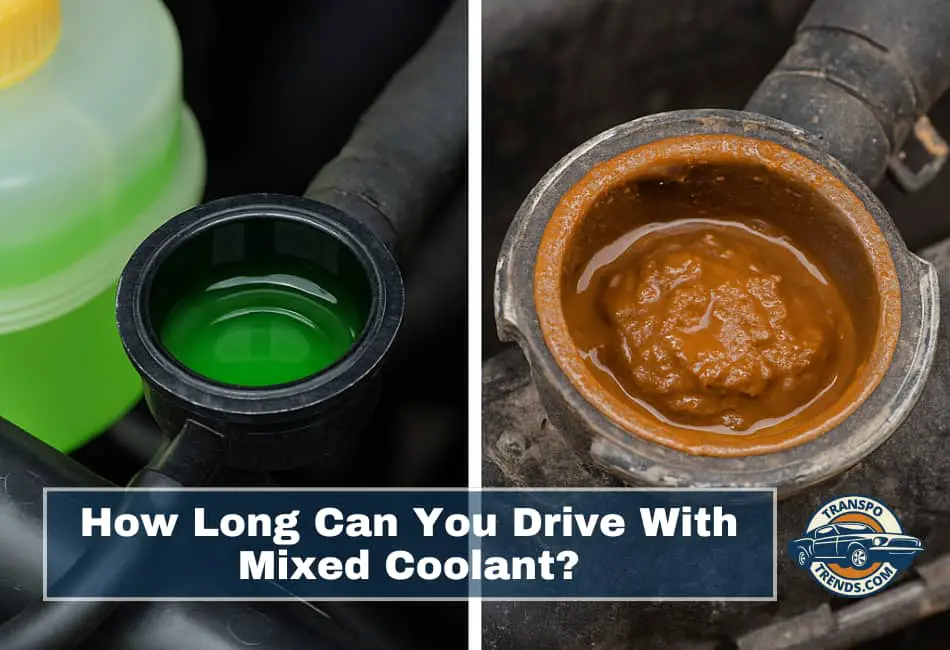Your vehicle’s cooling system is a critical component in keeping your engine healthy, and coolant (or antifreeze) plays a central role in its operation.
But what if you mistakenly top off your reservoir with a different coolant type than what’s already in the system?
In this in-depth guide, we explain what happens when coolants are mixed, the risks involved, and how long—if at all—it is safe to drive under those conditions.
The goal is to empower you with practical knowledge so you can make confident, informed decisions.
Understanding the Purpose and Types of Coolant
Coolant performs multiple essential tasks:
- Regulates Engine Temperature: Transfers heat away from the engine to prevent overheating.
- Prevents Freezing: Lowers the freezing point in cold climates.
- Inhibits Corrosion: Protects metal parts within the cooling system.
Coolants come in various formulations:
| Coolant Type | Color | Description | Lifespan | Common Uses |
|---|---|---|---|---|
| IAT (Inorganic Additive Technology) | Green | Silicate/phosphate-based corrosion inhibitors | ~2 years / 30,000 miles | Older vehicles (pre-1990s) |
| OAT (Organic Acid Technology) | Orange, Red | Silicate-free, long-life organic acids | ~5 years / 150,000 miles | Newer GM, VW, and Asian vehicles |
| HOAT (Hybrid Organic Acid Technology) | Yellow, Turquoise, Purple | Blend of IAT and OAT | ~5 years / 150,000 miles | Ford, Chrysler, some European and Asian cars |
| Universal Coolant | Varies | Designed for compatibility with all types | Up to 300,000 miles | Broad range if verified |
Mixing different coolant types—particularly IAT with OAT—can trigger chemical reactions.
What Happens When You Mix Coolants?
The additive packages in different coolants are not designed to interact. Mixing can cause:
- Sludge or Gel Formation: Creates a thick substance that clogs passages.
- Reduced Heat Transfer: The system may overheat as flow is restricted.
- Corrosion Risks: Inhibitors may cancel each other out, exposing metal components.
- Complete Engine Failure: Prolonged use may lead to warping or cracking.
How Long Can You Drive with Mixed Coolant?
There is no universal safe timeframe. It depends on several variables:
- Coolant Types: IAT mixed with OAT is more volatile than HOAT mixed with OAT.
- Proportions: A few ounces might not gel immediately, but it is still harmful.
- Driving Load: Towing or hot weather increases pressure on the cooling system.
- System Age: Older systems may already have buildup or wear.
What Should You Do if You Mixed Coolants?
If you suspect or know that incompatible coolant types were mixed:
- Stop Driving Immediately: Prevent additional stress and potential overheating.
- Check Coolant Reservoir: If needed, top up with distilled water temporarily.
- Flush the System Promptly: Use a radiator flush solution or take your car to a trusted mechanic.
- Refill with Manufacturer-Approved Coolant: Check your owner’s manual.
- Inspect for Damage: Ask for a check on the radiator, thermostat, and water pump.
How to Avoid Mixing Coolants
- Read Your Owner’s Manual: Know the required coolant specification.
- Stick to One Type: Do not switch brands or colors without confirming compatibility.
- Use Universal Coolant as a Last Resort: Only if verified for your vehicle.
- Regular Maintenance: Flush and replace coolant every 2–5 years.
- Visual Check: If the coolant appears cloudy, rusty, or gel-like, flush immediately.
Visual Breakdown: Mixed Coolant vs. Proper Coolant
| Component | Healthy Coolant | Mixed Coolant |
| Radiator | Free-flowing fluid | Sludge buildup, restricted flow |
| Hoses | Flexible and clear | Swollen or leaking |
| Coolant Appearance | Bright, uniform | Milky, dark, or gel-like |
| Engine Performance | Stable | Risk of overheating, loss of power |
Summary Table
| Issue | Risk | Solution |
| Mixing IAT and OAT | Chemical sludge formation | Flush system immediately |
| Prolonged driving | Engine overheating or failure | Stop driving, seek help |
| Tap water use | Mineral buildup, corrosion | Use distilled or de-ionized water |
| Sludge in system | Clogged radiator or heater core | Mechanic flush and inspection |

